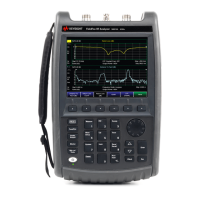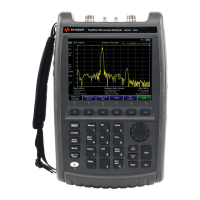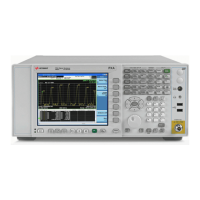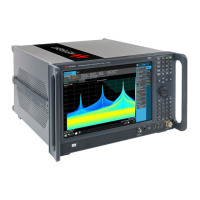Key Reference
Peak Search
156
NOTE
Two signal peaks, which are so close together that the amplitude drop
between them is less than the peak-excursion value, are not
recognized as two peaks. A signal peak is recognized only if it has a
peak excursion drop above the noise floor, on both sides of the signal.
the marker- peak does not recognize signals less
than peak- excursion value above the noise
floor. To correct this, when measuring signals
near the noise floor, reduce the excursion
value. To prevent the marker from identifying
noise as signals, reduce the noise floor
variance less than the peak- excursion value by
reducing the video bandwidth or by using
video averaging.
Key access: > More >Search Criteria
Peak
Threshold
Sets the minimum amplitude that the marker
can identify as
a peak. For example, if set to
–90 dBm, the marker moves only to peaks that
rise and fall more than the peak excursion
above –90 dBm. Only functional when in
Excursion and Threshold marker mode.
Key access: > More > Search Criteria
Threshold
Hidden
Hides the threshold line from being displayed
on the screen.
Key access: > More > Search Criteria
Peak Search
Typ e
Selects the peak search mode.
Key access: > More > Search Criteria
Max Value A Peak search with Max Value type
places a marker on the highest
peak, excluding the LO feedthrough
peak.
Max Value A Peak search with Max Value type
places a marker on the highest
peak, excluding the LO feedthrough
peak.
Peak
Search
Peak
Search
Peak
Search
Peak
Search
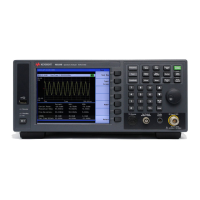
